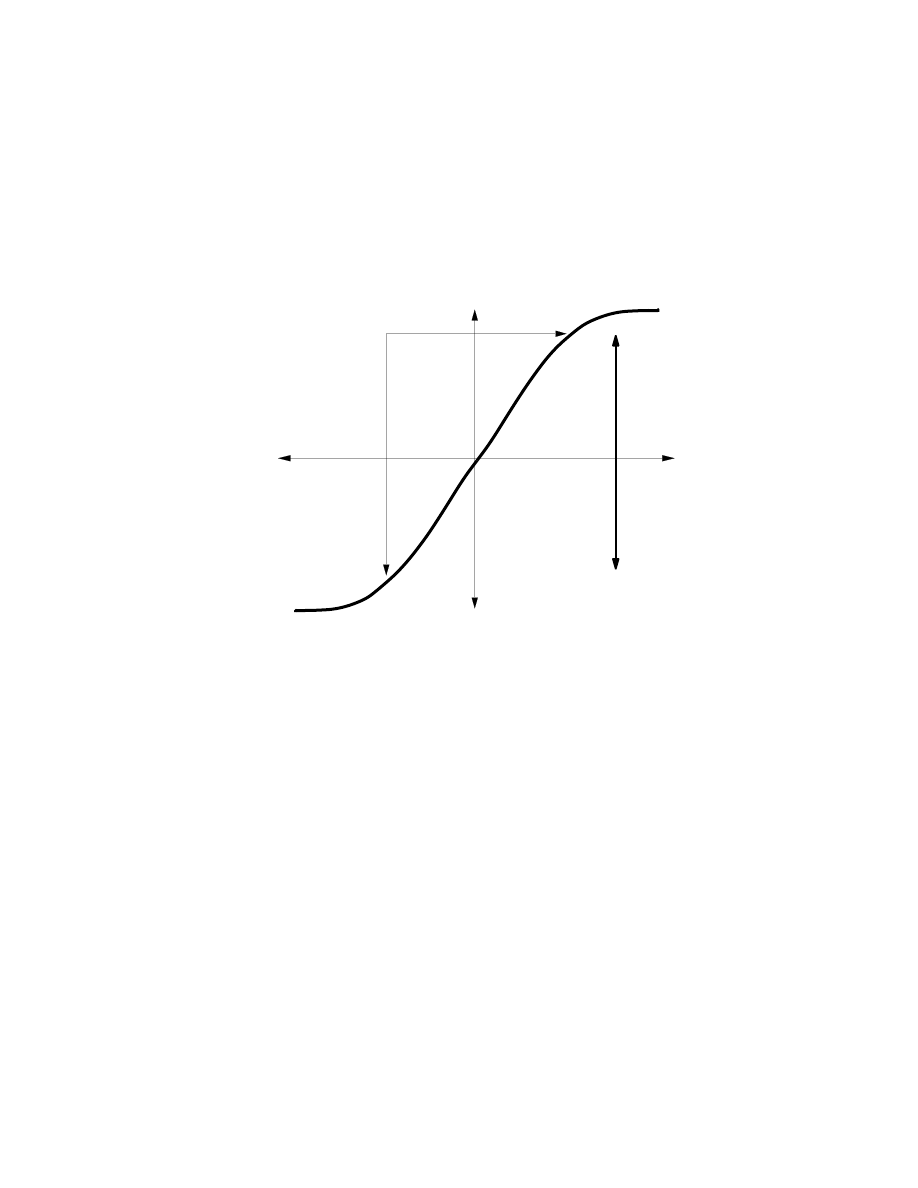ВУЗ: Казахская Национальная Академия Искусств им. Т. Жургенова
Категория: Учебное пособие
Дисциплина: Не указана
Добавлен: 03.02.2019
Просмотров: 12363
Скачиваний: 6

L
LFOA: See LFOP.
LFOP: Last Frame of Picture. Film acronym for the length of a given reel of film, usually
connoting the head leader up to and including the last frame of the reel. Because it is stan-
dard to start counting with the Picture Start from of the leader as 0000+00 (zero feet, zero
frames), the actual running time of a reel can be calculated by subtracting 11+15 (eleven feet,
fifteen frames) to account for the 12-foot, 8-second leader. The two-pop is at 0009+00, and the
first frame of picture of a reel is at 0012+00, sometimes referred to as LFOA.
librarian (software): Allows for computerized storage and organization of MIDI information
for large numbers of synthesized or sampled sounds. Information is organized to be specific
to synthesizer manufacturers’ protocols. Librarian software sends patch parameter instruc-
tions to the synth via a MIDI cable. See editor/librarian.
lift: A section of a longer piece of music which may be edited out and used independently.
For example, a musical phrase which is part of a longer piece of commercial music which
may be used for use for another purpose than which it was originally written.
lifter: A tape transport’s head-lifter mechanism. Tape machines normally lift the tape off the
heads when in fast-forward or rewind mode. The synchronizer intelligently controls the ma-
chine’s lifter operation to read timecode when required.
light metronome: A metronome which silently marks beats by flashing a light on and off, as
opposed to audible clicks, to mark the tempo.
Lightpipe: A serial, multiplexing, eight-channel interface for digital audio on a single fiber-
optic cable, terminating in a proprietary connector. The Lightpipe was invented by Alesis to
connect its ADAT MDMs. The data rate is 256 times the sample rate, or four times the data
rate of AES/EBU or S/PDIF. See also TDIF.
light valve: The mechanism which controls the intensity of light or the area on which light
falls in the making of an optical track for a film soundtrack from the finished mix. For variable-
density tracks, it consists of a narrow slit whose width is varied by the waveform reproduced
from the mix, and which in turn modulates the width a beam of light that is focused on a con-
tinuously moving strip of photographic film.
Lightworks: A particular brand of nonlinear picture editing system. See digital dubber.
LIMDOW: Light Intensity Modulation Direct OverWrite. A format for MO disks where the
direct-overwrite technology eliminates the need for an erase cycle and allows for the writing
of new data directly over existing data, with the result that the burst transfer time is cut in
half.
limiter: A special type of compressor which prevents the signal from exceeding a certain pre-
set threshold setting, no matter what the input signal level may be, by using compression ra-
tios of 20:1 or greater. Limiters are sometimes used in front of power amplifiers to prevent
high-level signals from causing distortion. See compressor/limiter. Called a clipper in Europe.
line: (1) A signal path or actual cable through which a signal passes. (2) One horizontal scan
of the raster in NTSC, PAL, or SECAM video signals. See field(4).

L
line amplifier: Now, any amplifier with a line-level output and an output impedance of ap-
proximately 600
Ω
.
linear: (1) A system is said to be linear if it meets the conditions of proportionality and addi-
tivity: if its output level changes smoothly in proportion to input level changes, and if input
x causes output X and input y causes output Y, then x + y at the input must cause X + Y at the
output. Most tests in audio including frequency response, gain, phase, impulse response, etc. as-
sume linearity.
Linear Portion
Input
Output
Range of Linear Input
Linear
(2) Uncompressed, i.e., an audio file that has not been processed by some kind of compression
algorithm, such as ADPCM. (3) A process which works in a sequential fashion, such as mag-
netic tape recording, playback the or editing tape media, etc., as opposed to a sequence of
steps which can be taken in any order and/or in any location, such as the random-access edit-
ing and playback processes which are made possible by digital storage technology.
linear distortion: Any type of distortion that a linear system is capable of producing, as op-
posed to nonlinear distortion. Some types of linear distortion are frequency response errors and
time-delay errors such as phase-shift.
line input: Any set of input terminals of an audio device designed to accept line-level signals,
or signals above about 25mV RMS. Normally high impedance and, therefore, not suitable for
most microphones.
line-level: The average audio voltage level of a signal at a particular point in an audio sys-
tem above 25mV RMS. The output level of a preamp is typically line-level, and the input
level of a power amplifier is line-level. In home or semi-pro equipment, the input or output
operating level is usually -10dBV. In commercial audio systems, line-level is metered with a
VU meter, where 0VU corresponds to 0.775V RMS of a signal. The line-level in pro audio sys-
tems may be +4dBm (1.23V RMS) or (archaic) +8dBm (1.95V RMS) or even +20dBm (~9V).
Typical line-level audio signals include synthesizer outputs, mixer outputs, and effects outputs.
As opposed to mic-level.

L
line-matching transformer: An electronic component that matches the output impedance of
one device with the input impedance of the next device in a signal path.
line pad: A passive attenuation network that can be inserted in a line.
line-up: The procedure carried out to ensure that recording, editing, playback, amplification,
etc. equipment works to the highest possible standard. It consists of systematic adjustment of
the equipment according to a schedule and may involve specialized calibration and test ap-
paratus such as a multimeter, tone generator, oscilloscope, etc.
line-up tone: (1) Also called a reference tone or reference frequency, a sine wave used for servo
control, such as on a sync tone. See vari-speed. (2) A sine wave tone at one of a range of stan-
dard frequencies (usually 100, 1,000 and 10,000Hz) It is set to zero-level and is intended to be
used for calibration, such as during a line-up procedure. The APRS-specified line-up tones for
magnetic tape recording are:
Length
Tone
Calibration Purpose
20”
1kHz at 0VU (0dB)
Maximum level check
20”
1kHz at -10dB
Calibrate the -10dB level
20”
10kHz at -10dB
Azimuth line-up check
20”
100kHz at -10dB
EQ alignment
link: See track-at-once.
lip ribbon: A ribbon microphone with a guard which is placed on the upper lip. The prox-
imity of mouth and microphone makes it useful in situations with high background noise,
e.g., battlefields or boxing matches.
lip sync: The process of matching dialog sound to the picture. See ADR.
Lissajous: See X/Y function.
little dipper: Nickname for a popular dip filter previously manufactured by UREI.
Little Old Ladies with Umbrellas: Film sound expression for how loud a film can be before
the movie patrons will complain. The effect is, therefore, that the top end of the dynamic
range available to mixers is not necessarily defined with regard to a theater’s ability to repro-
duce a mix. See also popcorn noise.
live: (1) Acoustically reflective, as opposed to dead. See LEDE, reflections. (2) In electrical sys-
tems, a conductor which carries current. (3) A broadcast which is transmitted as it happens,
i.e., in real-time.
live side: The side of a microphone which is most sensitive to sound. See acceptance angle.
live-to-two-track: See direct-to-two-track.
Lmax/Lmin: Lmax/Lmin are measurements of the dynamic range of a recording, Lmax obvi-
ously representing the maximum measured level of the recording, and Lmin, its minimum-
level counterpart. The dynamic range of an audio signal is Lmax-Lmin.

L
load: (1) Any component or device that consumes power produced by a separate source. Or,
to connect such a device to a power source. (2) To copy the contents of a file, database or
program from disk or other storage medium into memory.
loading: Placing a resistive load across a line, and generally one that is of lower impedance
than the line or device to which it is connected. This draws additional current from the pre-
ceding device, and can cause electrical power capacity problems.
load resistor: (1) A simple resistor placed across a transmission line in order to decrease the
impedance, generally for impedance-matching purposes. (2) A resistor wired across the outputs
of a power amplifier, simulating the impedance of a speaker.
lobes: In a mic’s polar pattern, the expanding curves represent the maximum value for each
direction of highest sensitivity. For example, the bi-directional polar diagram of a figure-eight
microphone shows two equal-sized lobes 180˚ apart.
local control: With Local Control on, playing a synthesizer or sampler does two things: it
triggers built-in sound generators and sends data to the MIDI Out. With Local Control off,
the keyboard still sends data to the MIDI Out but does not drive the internal sound genera-
tors, which now respond solely to data appearing at the MIDI In. In other words, Local Con-
trol off disconnects a synthesizer’s keyboard from its sound generator, while leaving them
both active for MIDI purposes. See MIDI mode.
local/remote switch: The switch on a synthesizer that selects whether tones will be generated
in response to its own keyboard, or from a remote device via MIDI.
locate point: See autolocator.
location sound: Sound recorded and/or mixed on location during the film or video shoot;
also known as production sound, live sound, location recording, and live recording.

L
logarithmic: Having to do with the logarithms of numbers rather than the numbers them-
selves. In graphs of audio phenomena, frequently the log of amplitude is plotted versus the
log of frequency. The common log of a number is the power to which the number 10 must be
raised to obtain the number. A log scale is a scale where distances are proportional to the
logs of the represented numbers, while a linear scale has distances proportional to the num-
bers themselves. See Appendix A.
Linear Amplitude Scale
Logarithmic Amplitude Scale
Linear Frequency Scale
Logarithmic Frequency Scale
0
1
2
3
4
5
0
100
200
300
400
500
100Hz
200Hz
400Hz
800Hz
1,600Hz
3,200Hz
1 octave 1 octave
1 octave 1 octave
1 octave
1
10
100
1,000
10,000
100,000
10dB
10dB
10dB
10dB
10dB
Logic 7: Differing significantly from the discrete 5.1 surround-sound formats, Logic 7 is a ma-
trix-surround format with full-bandwidth channels. Logic 7 uses a proprietary decoder to
combine data from a discrete five-channel digital mix into two channels, thus Logic 7 is
known as a 5-2-5 matrix. Additionally, the matrix can decode to seven channels instead of
five, in which case the matrix creates two side loudspeaker channels, moving the rear chan-
nels completely to the rear. Logic 7-encoded material can be played through conventional
two-channel systems, as well as ProLogic- and Dolby Surround-encoded systems, although
the encoded material will sound best when replayed through a Logic 7 decoder.
logical editing: To set up note criteria (such as pitch range, velocity range, duration range,
placement within a measure, etc.), to which digital editing operations (e.g., cut, transpose,
quantize, etc.), will apply. Also called conditional editing, change filtering, selection filtering, split
notes.
longitudinal timecode (LTC): Refers to SMPTE timecode recorded on one of the audio tracks
of a video tape. Usually the highest-number edge track at -3dB.